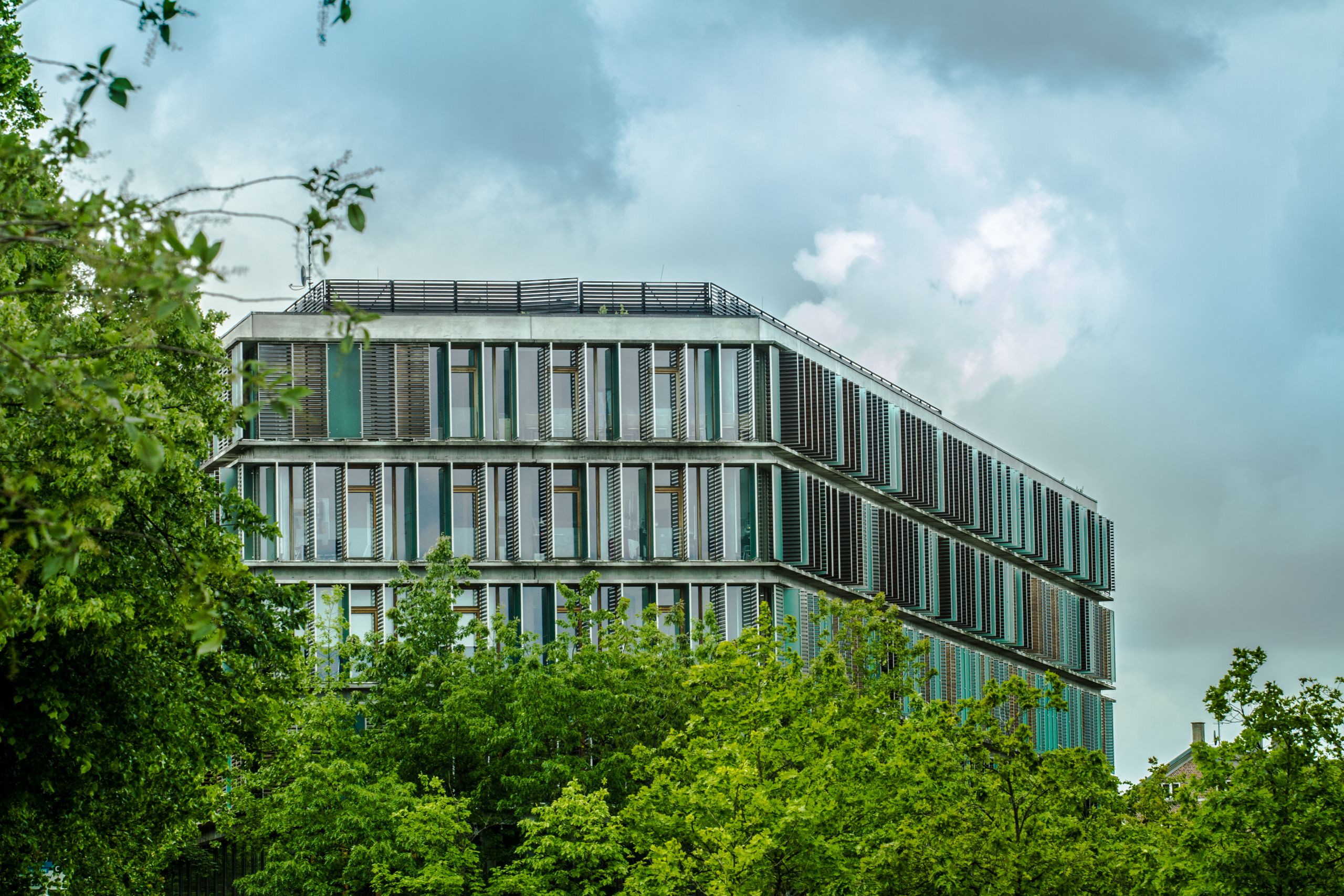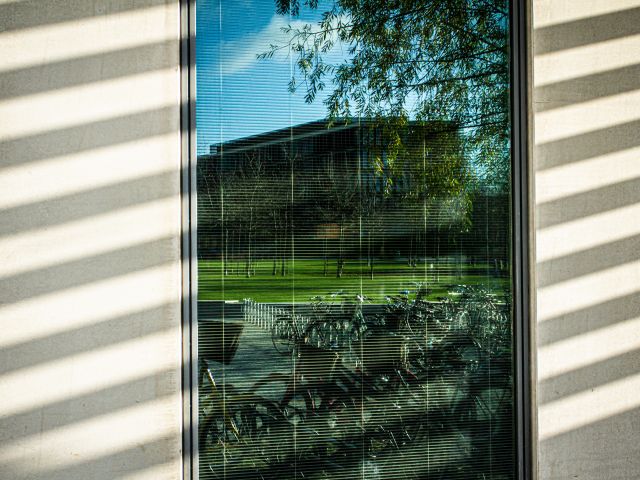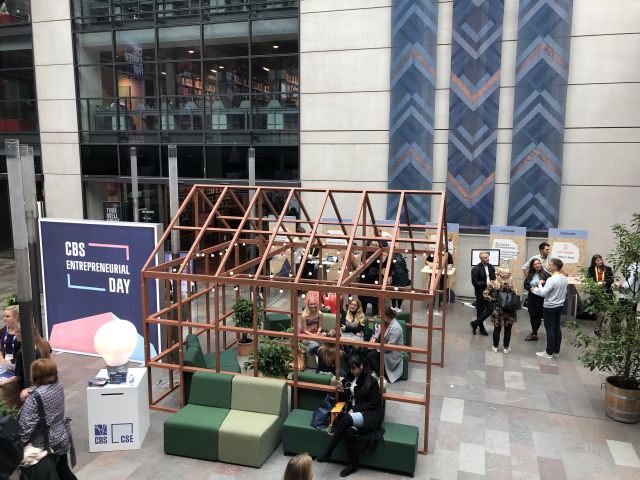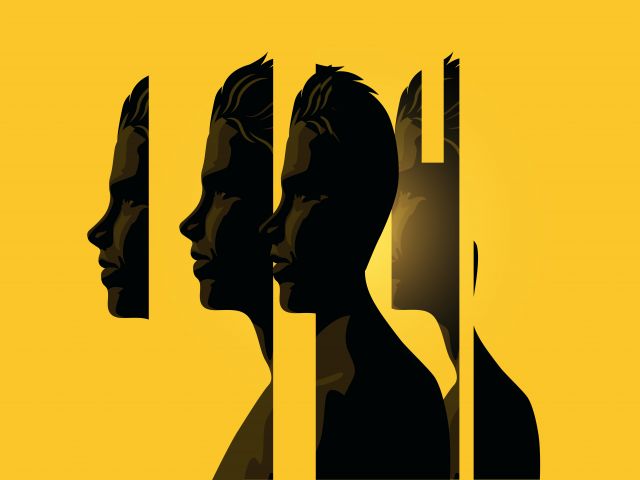CBS jumps on the SDG bandwagon

(Photo: Anna Holte)
A new report aims to communicate CBS’ engagement in supporting the UN’s 17 Sustainable Development Goals. The authors hope the report will lay the foundation for a new reporting system and external collaborations.
Since the launch of the UN’s 17 Sustainable Development Goals (SDGs) in January 2016, governments, businesses, organizations, universities and schools have adopted the SDGs as a framework and communication tool to show how the SDGs are being supported.
And CBS is doing exactly the same. For example, CBS has mapped and connected the SDGs to its research publications, study programs and courses in order to see how CBS is contributing to the goals. The report works as a baseline for how CBS can improve its work with the SDGs, and now the same exercise has been completed with CBS’ Campus Sustainability Programme.
In short, CBS’ Campus Sustainability Programme contains goals and targets relating to the social, environmental and economic aspects of sustainability. For example, CBS wants to support urban gardening, reduce greenhouse gasses by 100% by 2050, and develop a human well-being campus map, including interventions to support employees’ and students’ health and well-being.
According to Kristjan Jespersen, Associate Professor and co-author of the CBS Campus Materiality Report (Report_Materiality_CBS_web-1.pdf), linking CBS’ own goals and targets with the SDGs is a way to tap into other businesses’ and organizations’ communication, he explains.
“The SDGs have become an important governmental and communication tool, and everyone wants to jump on the bandwagon. So for CBS it’s also a natural way to bring more businesses onto campus that are interested in the Sustainable Development Goals. We are situated in the heart of the municipality, that under normal circumstances thrives with 22,500 students each day. It would only seem natural, if encouraged, that Danish companies can partner with our campus, so as to test their technologies, services and initiatives on our campus. In that way, we can also showcase what universities are meant to do – test, teach and publish,” he says.
Tore Klitgaard, architect and co-author of the report, argues that linking CBS’ goals and targets to the prestigious SDGs illuminates them in a bigger picture and draws attention from students, researchers, stakeholders and potential partners.
“We’ve linked them to the SDGs to make communication tangible and engage the external world in our mission. Some people relate better to the SDGs than simple goals in a paper. And it also shows what we can and are willing to do to support the world-wide transition.”
Tore Klitgaard gives an example:
“When we sort waste at CBS, we are doing a little bit of good. Does it matter in a wider context? Perhaps not, but when we use it as an example for the world and connect it to the SDGs, it makes an impact and becomes a way of networking with people who are interested in doing the same,” he says.
SDG reporting system
Not only can the SDGs be used as a communication tool. Kristjan Jespersen argues that using the SDGs as a framework related to internal goals and targets also works well as a reporting system.
“For us, it can be used as a way to develop a robust reporting system, both for ourselves, but also for other universities,” he says and continues:
“As it is right now, no other Danish university has a report like this one, but if all Danish universities had them, we could not only share our initiatives, but compare our efforts and what we want to achieve. It could be a way of supercharging the initiatives to attract more universities on board.”
Kristjan Jespersen has already made his methodology behind the report accessible for anyone interested in creating a similar report.
Our goals, your goals – UN goals
Just like the previous reports, Kristjan Jespersen has looked into the individual targets and goals in CBS’ Campus Sustainability Strategy and translated them into the SDGs, based on how they contribute to the goals.
However, meeting internal and individual goals and targets is one thing. Meeting the SDGs, which include ending hunger by 2030, is a whole different ballgame.
“We want to achieve the goals in our own sustainability program, but how do we achieve the SDGs? That’s something we need to define, and that would naturally be the next step. When are we successful at CBS? Is that just based on meeting our own goals? We need to narrow that down to some KPIs with annual reports that are linked to the SDGs,” says Tore Klitgaard.

Naturally, all of the 17 SDGs are not represented in CBS’ Campus Sustainability Programme. However, with the annual reports, it is possible that any “leaks in the ship” will show up.
“I’m sure we will see areas that need more support later on, but for now, we don’t see any gaps as such,” says Kristjan Jespersen.
Overall, Tore Klitgaard hopes the new report will clarify for everyone what CBS is doing and why.
“I hope that now it will be easier for everyone to work with the SDGs. And using the SDGs is just another way of framing the work we already do. Hopefully, we can grow something extraordinary out of this, as we believe it will be the new way of networking,” he says.






































































































































Comments